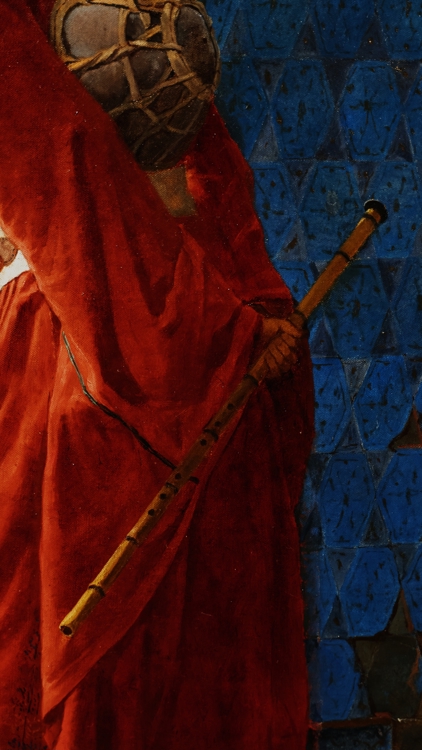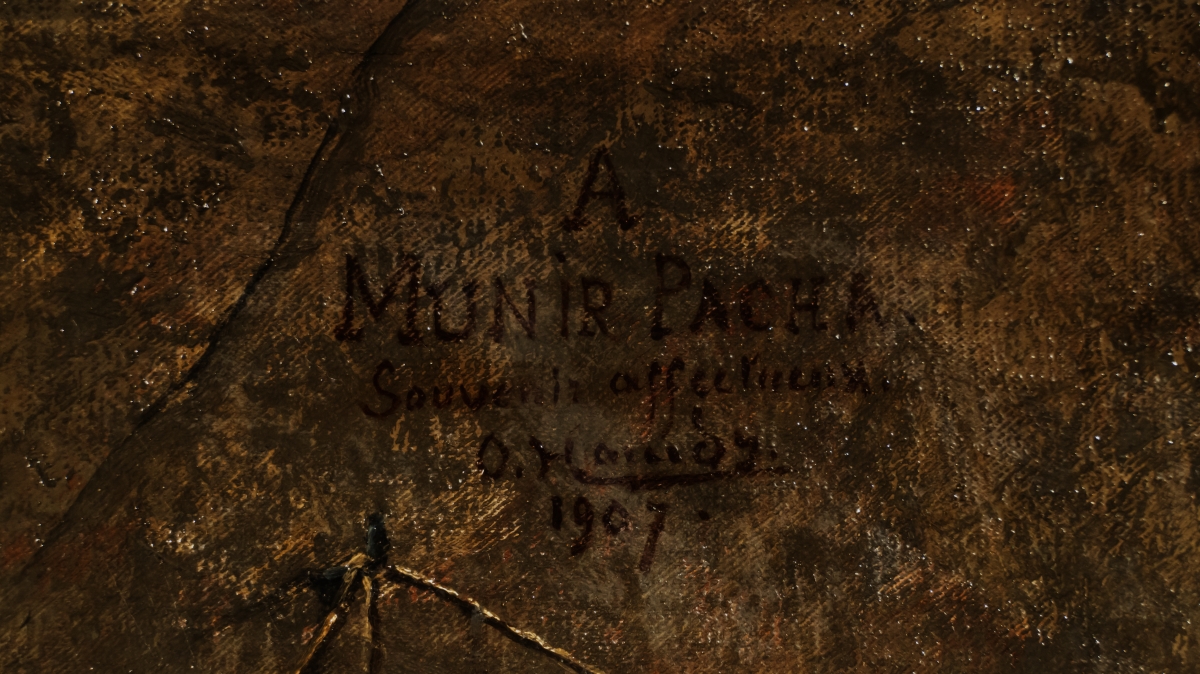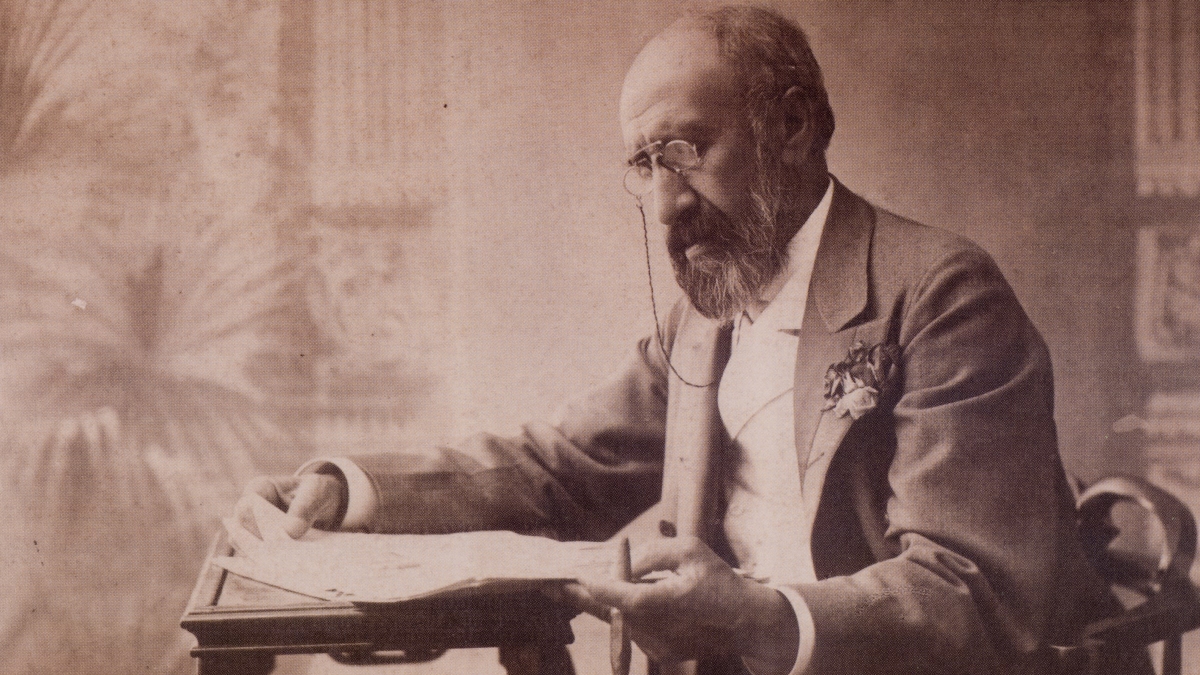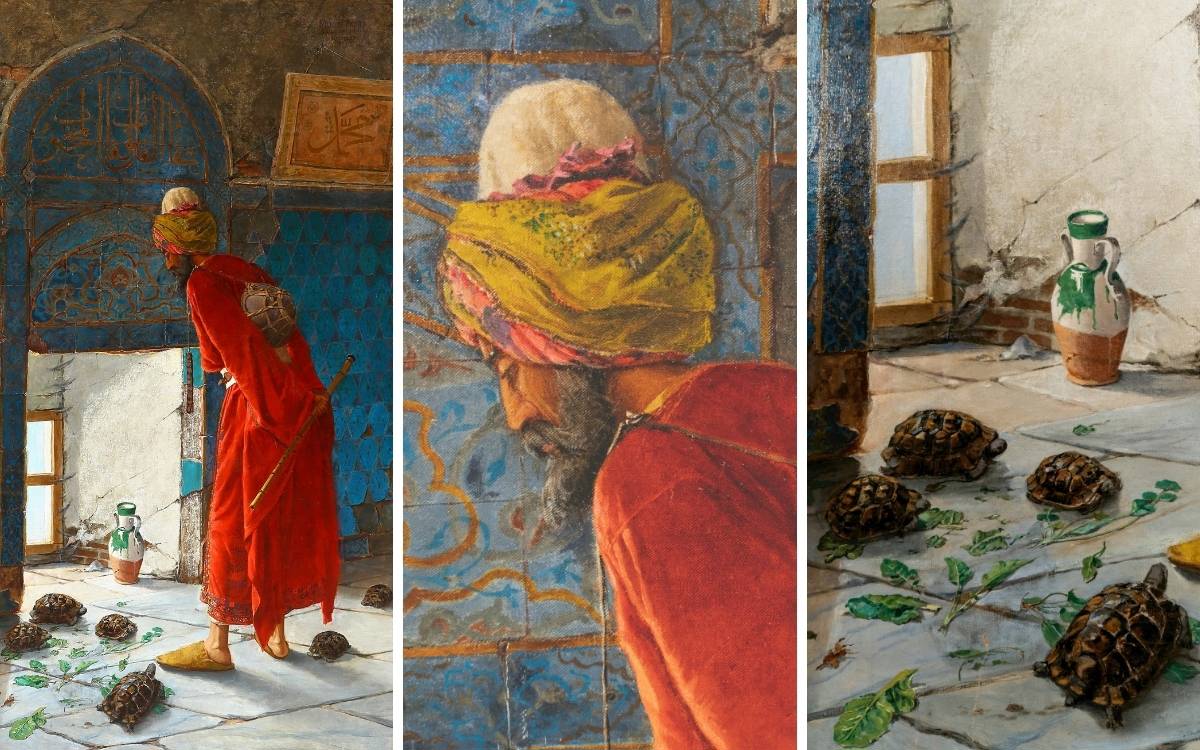Osman Hamdi Bey's second version of "The Tortoise Trainer" from 1907 has joined the permanent exhibition "Watching Turkish Painting" at the Isbank Museum of Painting and Sculpture. Meanwhile, the artist's first piece on the same theme from 1906 is displayed at the Pera Müzesi.
In this 1907 painting, which is one of two similar versions Osman Hamdi Bey worked on regarding the same subject and is known as "The Tortoise Trainer," the artist referred to as the "Turtle Man," there are six turtles, unlike the previous year's painting, which featured five turtles.

In a room believed to be part of the Bursa Green Mosque, commissioned by Sultan Mehmed Celebi, who ruled between 1413 and 1421, one can observe the inscription "Şifa’al-kulûb lika’al Mahbub," meaning "The cure for hearts is to meet the beloved (Prophet Muhammad)."
Next to it hangs a plaque inscribed with "Muhammad." Additionally, a white ceramic pitcher with green drippings, known as a Çanakkale jug, stands within a niche and is unique to this tableau.
Prof. Dr. Gül İrepoğlu, the founding curator of the Isbank Museum of Painting and Sculpture, described the painting signed and dated by Osman Hamdi Bey, who can be described as an Orientalist painter, which he dedicated to his co-in-law Mahmud Münir Pasha with the French inscription "muhabbetle yadigâr" (a gift with affection), as "a reflection of the enlightened artist's broad imagination and universal inspirations."

About Osman Hamdi Bey

Osman Hamdi Bey was an archaeologist, museum curator, painter, and the first mayor of Kadıköy. He was born on December 30, 1842, in İstanbul and passed away on February 24, 1910, also in İstanbul. He is remembered as one of the intellectuals of the Ottoman Empire during the Tanzimat Period.
Osman Hamdi Bey served as the director of the İstanbul Archaeology Museums for 29 years, during which he elevated the museum to international acclaim. His most renowned work is "The Tortoise Trainer," of which he created two different versions in 1906 and 1907. The 1906 version of this masterpiece is displayed at the Pera Museum in İstanbul. (AÖ/PE)





